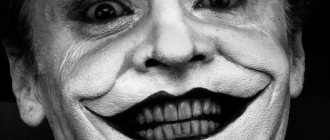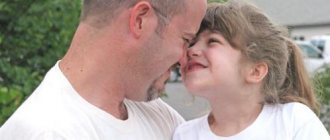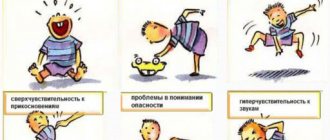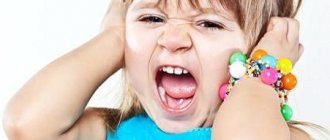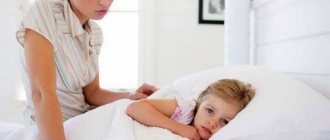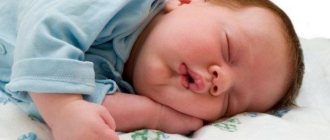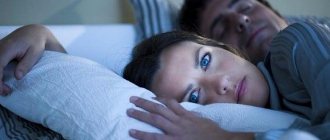What is an apnea attack?
An attack of apnea is noted when breathing stops for more than 20 seconds and for 10 seconds with concomitant bradycardia. After this period of time, infants experience hypoxia, which can damage brain cells
The main cause of apnea in children born prematurely is the underdevelopment of the respiratory control center. This is a collection of cells of the nervous system - neurons that ensure the coordinated functioning of the respiratory muscles, adapting them to internal and external changes. As the nervous system develops, by 40-45 weeks, apnea attacks are eliminated in most cases.
In children born at full term, as well as those older than 1 year, apnea attacks mainly occur due to airway obstruction. This may be a consequence of congenital disorders and internal pathologies of the body. In these cases, careful monitoring and elimination of possible causes are required.
Particularly at risk are children with a gestational age of less than 34 weeks, weighing less than 2.5 kg, with birth injuries and congenital disorders of the central nervous system. The consequences of apnea attacks can be irreversible. Complete cessation of breathing disrupts the heart rhythm, which can cause death.
Types and causes of apnea
There are several types of apnea, which have different development mechanisms and causes that provoke episodes of respiratory arrest.
Central
Disturbance in the functioning of the central respiratory center. During an attack, the respiratory muscles do not receive impulses that stimulate their movement.
Causes:
- prematurity;
- brain and spinal cord injuries during childbirth;
- hypoglycemia (low blood glucose levels);
- hypoventilation of the alveoli of central origin (disorders of gas exchange);
- epilepsy;
- viral and bacterial infections;
- pharmacological drugs taken by the mother or child;
- anemia;
- arrhythmia;
- bronchopulmonary dysplasia;
- hyperbilirubinemia;
- electrolyte disturbances;
- sepsis.
Central apnea of the idiopathic type is very rare. This diagnosis is made when it is impossible to determine the cause of the syndrome.
Obstructive
Attacks occur due to airway obstruction. The disruption of air flow is accompanied by characteristic movements of the chest.
Causes:
- macroglossia (abnormal enlargement of the tongue);
- laryngospasm (involuntary contraction of the muscles of the larynx);
- cleft lip;
- achondroplasia (slow growth of cartilage and bones);
- dysfunction of the posterior laryngeal muscle (injury, paralysis);
- enlarged tonsils;
- obesity;
- stridor (congenital narrowing of the airways);
- Robin's syndrome (underdevelopment of the tongue and lower jaw).
OA is observed in all age groups. The peak of the disease occurs between the ages of 2 and 8 years.
Mixed
Initially, central apnea appears, which develops into airway obstruction.
Causes:
- heart pathologies;
- overheating, hypothermia of the body;
- deficiency of calcium and glucose in the body;
- the influence of drugs and alcohol used by the mother during pregnancy.
This type of apnea occurs rarely, but is difficult to diagnose and treat.
Causes of pathology
The appearance of an anomaly may be due to the influence of various factors. This category includes congenital defects, hereditary predispositions, and acquired diseases. Attacks are often caused by external factors - hypothermia or exposure to high temperatures.
We recommend reading: Why a person chews, slurps in his sleep, and what to do
In young children, during REM sleep, respiratory abnormalities occur, which lead to abnormalities in the functioning of the respiratory system.
Apnea most often occurs in premature newborns. This situation is caused by respiratory distress syndrome. The cause is insufficient maturity of the lung tissues and a deficiency of surfactant - a mixture of substances that lines the inside of the alveoli of the organ.
Respiratory disorders may be associated with various maternal pathologies. These include heart and vascular diseases, diabetes mellitus, bleeding from the uterus, and the risk of miscarriage. Hypoxia or asphyxia of the child during intrauterine development also becomes a provoking factor.
Apnea occurs under the influence of various factors. The central form is caused by problems with the functioning of the brain center responsible for breathing. It also leads to diseases of the lungs and heart. In this situation, causes of apnea in newborns include the following:
- Diseases of the nervous system associated with birth injuries or infectious pathologies during fetal development;
- Smoking by the mother during pregnancy;
- Congenital heart lesions;
- Prematurity of the child;
- Down syndrome;
- Low birth weight;
- Meningitis;
- Bronchopulmonary dysplasia;
- Epilepsy;
- Cerebral palsy;
- Mitochondrial abnormalities.
The following factors lead to the obstructive form of apnea:
- Pathologies of ENT organs;
- Excess weight;
- Swelling of the mucous membranes of the pharynx or larynx due to viral infections or allergic reactions;
- Constant regurgitation;
- Weakening of the tone of muscle tissue due to the recession of the tongue during sleep;
- Abnormal structure of the respiratory tract;
- Malocclusion.
Complex diseases most often lead to a mixed form of pathology. Attacks of respiratory arrest are caused by the influence of two categories of factors at once.
What factors increase the likelihood of sleep apnea in a child?
- Presence of apnea in the family.
It can be inherited.
- High birth weight.
Bigger children have more fat in the neck, which can put pressure on the airways.
- Congenital physical defects.
For example, children with jaw problems may have narrowed airways.
- Congenital genetic problems.
Down syndrome, Pierre-Robin syndrome.
- Premature babies.
Their respiratory system is poorly developed. And the central nervous system is not yet able to regulate breathing normally.
- Children who live in the highlands or at higher elevations.
Due to the high rarefaction of air.
Signs of sleep apnea in children
Episodes of apnea most often occur against the background of general muscle relaxation, so breath holding mainly occurs during sleep.
While holding your breath, short-term hypoxia develops, causing the child to suddenly wake up. This is accompanied by severe fear, which provokes a strong release of adrenaline into the bloodstream, which irritates the nervous system and disrupts sleep functions.
Characteristic symptoms of apnea:
- snore;
- lack of breathing for 10 seconds or more;
- mouth breathing;
- sweating;
- restless sleep;
- headaches during the day;
- decrease in development dynamics.
A child who is constantly sleep-deprived develops chronic fatigue and becomes moody and irritable. Appetite is impaired, weight and general activity decrease.
Episodes of apnea in many cases occur during REM sleep, which accounts for only 25% of the total time, and therefore often go unnoticed. Against this background, the main warning signs are snoring and disruption of the child’s behavior during the day.
From the video you can learn by what signs apnea can be recognized and why snoring during sleep is so dangerous.
Possible consequences
Regardless of the type of apnea, pathological changes occur in the child’s body. With periodic lack of breathing, oxygen deficiency occurs. Depending on the cause, such episodes can be repeated 5-100 times per night, which adds up to an impressive period of up to 4 hours.
All this time, the structures and organs of the body suffer from a lack of oxygen, and primarily the brain. This leads to pathological disorders in the body and the formation of serious diseases.
Complications of apnea:
- Attention deficit and hyperactivity.
This syndrome manifests itself in the child's difficulty concentrating, hyperactivity, impulsiveness and uncontrollability.
- Hypertension.
During oxygen deficiency, the body activates compensatory mechanisms, increasing blood circulation. This leads to an increase in blood pressure, which is periodic. Constant changes in rhythm lead to wear and tear of the heart structures.
- Arrhythmia.
Lack of nutrition of the heart muscle disrupts automatism, which immediately affects the rhythm of heart contractions, and atrial fibrillation develops.
- Cardiac pathologies.
A child with apnea has a high risk of developing coronary disease, heart failure, and against the background of these pathologies, heart attack and stroke.
Chronic lack of sleep leads to daytime sleepiness, which significantly increases the rate of injury.
Types of breath holding in children
There are two types of periodic breathing depending on the symptoms:
- Cyanoid. Symptoms are a sudden stop in breathing, rapid spread of cyanosis to the limbs and face, the color of the skin can be from pale blue to deep purple.
- The second option often goes unnoticed by parents because it causes paleness. There is a sharp outflow of blood from the skin. The child may even lose consciousness in his sleep.
These symptoms may include seizures. Muscle tone also increases. Since periodic breathing occurs during sleep, the child cannot influence the situation.
Diagnosis of the disease in infants
The basis for diagnosing apnea is monitoring the child’s body during sleep. In this case, the doctor will need to help the parents, who, while the child is sleeping, use a stopwatch to record the duration of breathing pauses.
During the collection of anamnesis, the child’s behavior during sleep and during the day, the presence of chronic pathologies and hereditary diseases are clarified. An assessment is carried out to determine the degree of obesity, and the neck diameter is measured. After this, the child is examined by an otolaryngologist to determine possible pathologies of the ENT organs.
Polysomnography plays a major role in making a diagnosis. For this purpose, special equipment is used, which makes it possible to record all body functions that are significant for diagnosis during sleep.
The procedure combines:
- analysis of electrical processes in the brain;
- study of heart function;
- registration of eyeball movement;
- analysis of electrical activity of the chin muscles;
- pulse oximetry;
- respiratory flow data recording;
- control of chest movements;
- analysis of the child's behavior during sleep.
Detailed data allows obtaining electrodes attached to the patient's body and video recording cameras with infrared illumination. The procedure is carried out in a specialized medical institution under the constant supervision of medical personnel.
Treatment of newborn children in a hospital
Children with a gestational age of 28-37 weeks are placed in special incubators, where conditions similar to those in the womb are created for them. Children are monitored around the clock by neonatologists; special devices record all changes in their bodies. During episodes of apnea, doctors receive a signal through sensors and, depending on the situation, determine what type of help the baby needs.
Therapeutic assistance:
- Stimulation of the respiratory center.
In mild episodes of apnea, breathing is easily restored using tactile stimulation. These are light blows to the body with a finger, heels or back. Some hospitals have incubators with a vibration system.
- Ventilation
For repeated and prolonged breath holdings, a ventilator (artificial lung ventilation) is used. For this purpose, special masks and bags are used.
- Oxygen therapy.
This is oxygen inhalation, used for severe hypoxia in the child’s body.
- Pharmacological drugs.
Medicines are used for severely recurrent episodes of apnea without an identifiable cause. These are drugs from the methylxanthine group: theophylline and caffeine.
- CPAP therapy.
This is a helper method. It is used for obstructive or mixed apnea to prevent the collapse of the upper respiratory tract.
If there are no intraventricular hemorrhages, bronchopulmonary dysplasia and retinopathy, episodes of apnea in newborns generally cease by 36 weeks. If it is possible to monitor heart rate and respiratory rate at home, newborns are discharged. Monitoring is continued until 45 weeks, and if there are no respiratory arrests, it is stopped.
Diagnosis of OSA
The American Academy of Pediatrics (AAP) developed clinical and practice guidelines for the diagnosis and treatment of OSA in 200013. The recommendations are accompanied by an in-depth, comprehensive review of the literature14. The AAP recommends screening for OSA in all children who snore. Despite these recommendations, not all pediatricians perform such screening. Clinical examination alone is not sufficient to identify OSA because parental findings may vary and depend on many factors, including anxiety in the family, degree of sleep disturbance in family members, frequency of nighttime awakenings from OSA, and impact on daytime functioning of family members. Outside observers often cannot clinically distinguish children who simply snore from those who have OSA. The results of examination of a child during the daytime may be completely normal, despite significant obstruction of the upper respiratory tract at night, which complicates diagnosis. All modern methods of detecting upper airway obstruction by imaging (lateral X-ray and MRI) are not dynamic and cannot reliably identify obstruction. Overnight polysomnography (PSG)15 is considered the test of choice for identifying children with OSA. If OSA is suspected, in the absence of a specialized pediatric laboratory, you can contact an adult center. However, adult diagnostic criteria cannot be used when interpreting the results. New reference values for pediatric PSG have recently been published. The lack of opportunities to examine children and the lack of standardization in the analysis and interpretation of data make it difficult to effectively treat children and determine the need and prognosis of a particular treatment method. It should also be noted that a number of research groups have developed simplified OSA testing methods for screening purposes. Portable and simplified devices include pulse oximetry, short-day polysomnography, and can be useful in identifying OSA, but they do not fully assess the disease as a whole14,16.
Treatment of apnea in childhood and school age
Minor manifestations of snoring do not harm the body, so in these cases they prefer to stick to a wait-and-see approach. In many cases, as the cranial bones grow, the lumen of the respiratory tract increases, and respiratory dysfunction is eliminated. During this period, an annual polysomnographic examination is performed.
Once the diagnosis is confirmed, active treatment begins, which is aimed at eliminating obstruction and hypoventilation of the respiratory tract, eliminating the causes of apnea. Treatment for apnea depends entirely on the form of the syndrome and the cause of the respiratory dysfunction.
Surgical methods
Surgical correction of the problem is the first choice in the presence of congenital or acquired airway abnormalities.
Basic operations:
- tonsillectomy (for hypertrophy of the tonsils);
- adenoidectomy (removal of adenoids);
- correction of the nasal septum.
Rarely, only in extremely difficult cases:
- tracheostomy (for congenital and acquired obstructive anomalies, underdevelopment of the respiratory tract);
- uvulotomy (cutting off the tongue).
The effectiveness of surgical intervention is on average 75-100%. Breathing is re-evaluated 1-1.5 months after surgery.
CPAP therapy
The essence of this method is to constantly maintain increased air pressure in the respiratory tract. This prevents the walls of the airways from collapsing and vibrating. This method is used in the absence of indications for surgery.
During treatment, before bedtime, a mask is put on the child, combined with a hose through which the air produced by the compressor is supplied. It is important to adhere to continuous therapy, using the device during night and daytime sleep.
After interrupting the procedures, problems with holding your breath return within a few days. CPAP therapy allows you to eliminate the symptoms of apnea and prevent the consequences of hypoxia until the facial skeleton is fully developed.
The doctor regulates the humidity and air pressure based on the age and weight of the child. Parents need to fully adhere to these instructions and ensure that procedures are continued and correct. The duration of therapy varies from several months to several years. In difficult cases, the device will have to be used for the rest of your life.
First aid for episodes of apnea
Prolonged episodes of apnea can lead to asphyxia, which threatens the baby's life. In these cases, a favorable prognosis depends entirely on the quick and coordinated action of the parents.
You should urgently call an ambulance if your child:
- the limbs, the wings of the nose, the edges of the lips turned blue;
- heart rate below 90 beats per minute;
- legs and arms hang down involuntarily.
Blue discoloration (cyanosis) of the skin indicates a decrease in oxygen levels in the blood (asphyxia). First you need to try to help the child using tactile stimulation. This is running a finger along the back along the spine, massaging the ears, arms, legs and chest. If the measures do not help, begin artificial respiration.
To do this you need:
- place the child on a horizontal surface;
- check the airway, lift the chin and move the head back when the tongue sinks;
- wrap your lips around the baby’s nose and mouth, holding the head tightly;
- inhale half the volume and make 2 smooth inhalations with a duration of no more than 2 seconds;
- if there is no movement of the chest, repeat the procedure, changing the position of the head;
- after the chest begins to move, you should try to feel the pulse on the inside of the arm above the elbow;
- continue the procedure if there is a pulse;
If there is no pulse, begin cardiac massage. To do this, place 2 fingers on the middle of the chest slightly below the nipple line. After this, you need to press sharply 5 times within 3 seconds. The chest should bend by 1.5–2 cm. Next, alternate 1 inflation and 5 compressions.
Procedures continue until emergency doctors arrive. After such manifestations of apnea, hospitalization of the child is indicated.
Prevention of apnea
It is possible to prevent holding your breath; to do this you need to follow some rules:
- A hard mattress will ensure safe sleep for the baby. For information on how to choose the right mattress, follow the link.
- Until the age of 2 years, a newborn sleeps without a pillow.
- The child should sleep on his side or back, but not on his stomach.
- It is not recommended to overheat your baby before bedtime.
- The crib is installed next to the parents' bed.
Thus, apnea in newborns is a dangerous disease that is important to diagnose promptly and properly treat. If symptoms occur, immediately contact your doctor, who will make a diagnosis and determine a treatment regimen. Parents should learn first aid to prevent sudden infant death.
Subscribe to our VKontakte group


